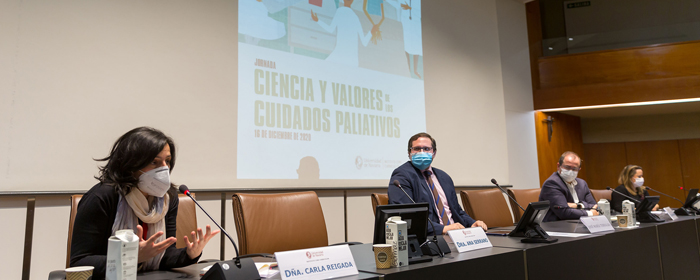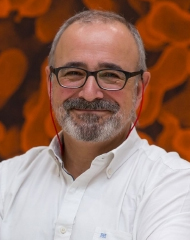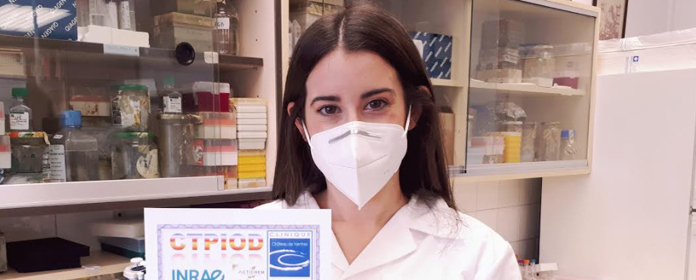La Clínica Universidad de Navarra pone en marcha un ensayo clínico de terapia celular frente a la cirrosis
The Clínica Universidad de Navarra launches a clinical essay of cell therapy against cirrhosis.
The study of the treatment, pioneer in the world for its method of application, is open to the participation of patients suffering from advanced stage disease.
The Clínica Universidad de Navarra has launched a clinical essay on the cell therapy treatment of liver cirrhosis, a therapeutic approach to this liver disease that, due to its application characteristics, is a pioneer in the world.
The essay is aimed at people suffering from liver cirrhosis at a relatively advanced stage, regardless of the cause of the disease.
Cirrhosis is the final consequence of various chronic liver diseases that leads to the loss of the normal architecture of the liver and a progressive decrease in its functions. The main structural alterations that appear in the liver are hepatocellular necrosis, fibrosis and regeneration nodules.
"The fundamental causes of cirrhosis are excessive alcohol consumption, hepatitis B and C viruses and some metabolic diseases. This disease produces complications derived from hepatic insufficiency and hypertension portal, that is to say the increase of blood pressure in the venous system of the liver", specifies Dr. Jorge Quiroga Vila, specialist of the Hepatology Unit of the Clínica Universidad de Navarra and researcher main essay clinical.
He adds that the disease "ends up turning over the years into terminal cirrhosis, which leads to liver transplantation, if possible. This is why it is essential to research new treatments, in this case, cell therapy".
The treatment, which is completely new, consists of The treatment, which is completely new, consists of "obtaining cells from the patient's bone marrow and culturing them for a week at laboratory so that they evolve into precursors of endothelial cells. When they have reached this stage, they are injected directly into the liver through the hepatic artery," explains Dr. Jorge Quintana."According to Dr. Jorge Quiroga, the cells obtained are then injected directly into the liver through the hepatic artery.
Thus, the cells obtained, continues the researcher, "They remain in the liver, where they release hepatoprotective substances, i.e. substances that are beneficial for liver function, as has been demonstrated in previous experiments programs of study . In fact, they are able to produce a series of substances with protective, regenerative and growth-stimulating capacities for liver cells. The aim is to test whether they could help the regeneration of the organ and, therefore, increase its functional capacity and decrease the alterations of blood circulation through the liver.".
With this essay, indicates the specialist of the Clínica Universidad de Navarra, the aim is to check "if the new treatment is effective in the treatment of liver cancer. "if the new treatment is effective in the evolution of cirrhosis in two aspects: with respect to liver function and hypertension portal".. In addition, he adds, the primary goal is to check that the therapy has no harmful effects. "As the cells are the patient's own, there is no risk of rejection. Previous programs of study with infusion of cells from another subject have shown no adverse effects, but whenever a Phase I-II clinical essay , such as the current one, is carried out, safety is a fundamental goal "..
In addition to the Hepatology Unit, the following areas are participating in the study: Cell Therapy and Radiology. Cell Therapy and Interventional Radiology areas of the of the Clínica Universidad de Navarra, as well as the area de Gene Therapy and Hepatology of the research center Applied Medicine of the University of Navarra.
As for the expected results of this new treatment, Dr. Jorge Quiroga acknowledges that it may be a partial advance against cirrhosis. "It is a step to check whether this therapy achieves a transitory improvement. If its application manages to revert the disease to a state, for example, six months or a year ago, it could be repeated every few years, provided it is well tolerated. In addition, it could be an important step towards perfecting the possible cell therapy of liver diseases.".
It should be recalled that participation in the essay is free of charge. Patients must undergo an analytical assessment , an ultrasound scan, a study of the venous pressure of the liver, the collection of the cells and the infusion of the cultured cells through the hepatic artery, which is reached from the femoral artery.
Since the possibility of participating in the study of this new therapy is still open, those who suffer from cirrhosis and are interested in finding out more can contact the Hepatology Unit of the Clínica Universidad de Navarra (948 296 637) or the e-mail address ihuarte@unav.es





